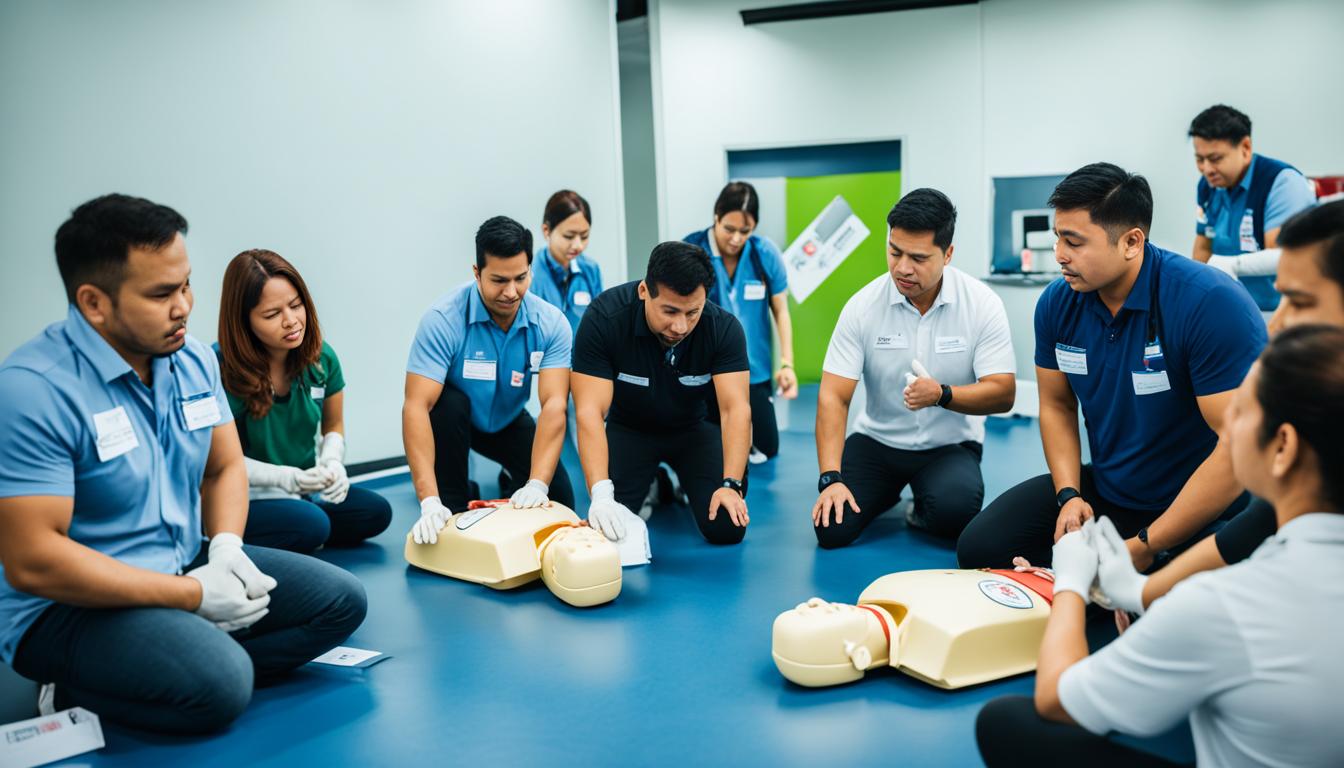Making sure your team is ready for emergencies is one of the most important things you can do to keep your workplace safe. No matter how bad the hurt is or how minor it is, a trained team can make all the difference. Setting up a First Aid Training In The Workplace? A plan that works for your team is an important part of any safety program. It will walk you through the steps you need to take to make a training plan that keeps your workers ready and your workplace safe.
Understanding the Importance of First Aid Training in the Workplace
Before diving into scheduling, it’s essential to understand why first aid training is vital for your team. Accidents happen, and whether you’re in an office, a construction site, or a childcare facility, having staff members who are trained in first aid can be life-saving. Workers who have been trained in first aid at work are better prepared to handle a medical emergency, accident, or hurt by knowing what to do and how to do it faster.
A well-executed first aid program can also contribute to a safer and more efficient workplace. Employees who are equipped with the proper knowledge and skills can reduce the impact of injuries, help prevent further harm, and provide emotional support to those affected. Additionally, a proactive first aid program may also reduce legal liability, improve productivity, and enhance employee morale.
Step 1: Assess Your Workplace’s Needs
The first step in creating an effective first aid training schedule is to assess your workplace’s specific needs. Different workplaces will have different risks and challenges. For instance, a childcare facility might face different health and safety concerns compared to an office environment. Identifying your team’s unique risks will help you determine the kind of first aid training required.
For example, if your employees work with heavy machinery or in high-risk environments, more advanced first aid courses will be necessary. On the other hand, if your workplace deals with younger children or vulnerable individuals, you might want to consider a Childcare First Aid Course. This course typically covers topics like infant and child CPR, dealing with choking, and how to respond to common childhood injuries such as burns or cuts.
Step 2: Plan the Frequency of Training
Once you understand your workplace’s needs, it’s important to decide how often to schedule first aid training. It’s crucial that first aid skills are refreshed regularly, as people may forget procedures or become less confident in their skills over time. Ideally, first aid training should be conducted at least once every year. However, if your workplace has a high turnover rate, you might need to conduct more frequent sessions to ensure that all new employees are trained promptly.
Additionally, make sure to consider the scheduling needs of your team. If your employees work in shifts or have busy schedules, try to offer multiple training sessions or make the training available during different hours to accommodate their availability. This way, you can ensure that all employees are trained without disrupting the day-to-day operations.
Step 3: Choose the Right First Aid Courses
The type of first aid training your employees need will depend on the specific risks in your workplace. Here are some common first aid training options you might consider:
- Basic First Aid: This course covers fundamental first aid skills, such as how to assess a situation, treat cuts, burns, and sprains, and handle medical emergencies until professional help arrives.
- CPR and AED Training: Cardiopulmonary Resuscitation (CPR) and Automated External Defibrillator (AED) training can prepare employees to act in the event of cardiac emergencies. It is essential for workplaces where the risk of heart-related issues is higher.
- Childcare First Aid Course: It’s important to plan this course if you work in a childcare center or have employees who work with kids. It provides knowledge on treating children’s injuries, managing allergic reactions, and handling infant CPR, among other critical skills.
- Advanced First Aid: For high-risk industries, such as construction or manufacturing, consider advanced first aid training that covers complex injuries and emergency management.
Step 4: Make the Training Accessible
Make sure the first aid training is easy for employees to access. Consider offering in-house training sessions for convenience, or partner with certified training providers to deliver courses on-site. Additionally, ensure that training schedules are clear and well-communicated to your team.
You might also want to consider creating an online module or an e-learning option for employees who may not be able to attend in-person sessions. Online training allows employees to complete the courses at their own pace while ensuring that they still receive the required certification.
Step 5: Evaluate and Update the Training Plan Regularly
Your first aid training schedule should not be static. It’s essential to evaluate the effectiveness of the training regularly. Seek feedback from your employees and adjust the schedule and training content as needed to ensure it meets your workplace’s evolving needs.
If new risks emerge in your workplace or regulations change, update the training plan to keep up with these developments. This way, your team will always be prepared for any medical emergencies that may arise.
Conclusion
Creating a First Aid Training In The Workplace schedule that works for your team is an investment in your workplace’s safety and productivity. By assessing your team’s needs, scheduling regular training sessions, and ensuring that your employees have access to the right courses (such as a Childcare First Aid Course for those working with children), you’ll foster a culture of safety that benefits everyone. Empower your employees with the skills they need to handle emergencies effectively, and watch your workplace thrive in a safer, more confident environment.
